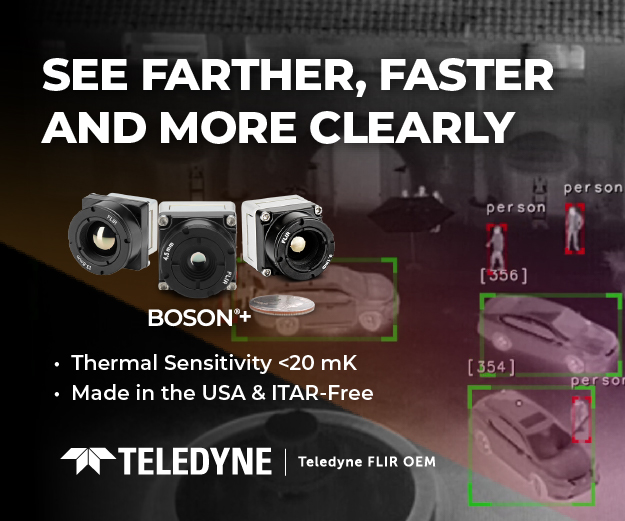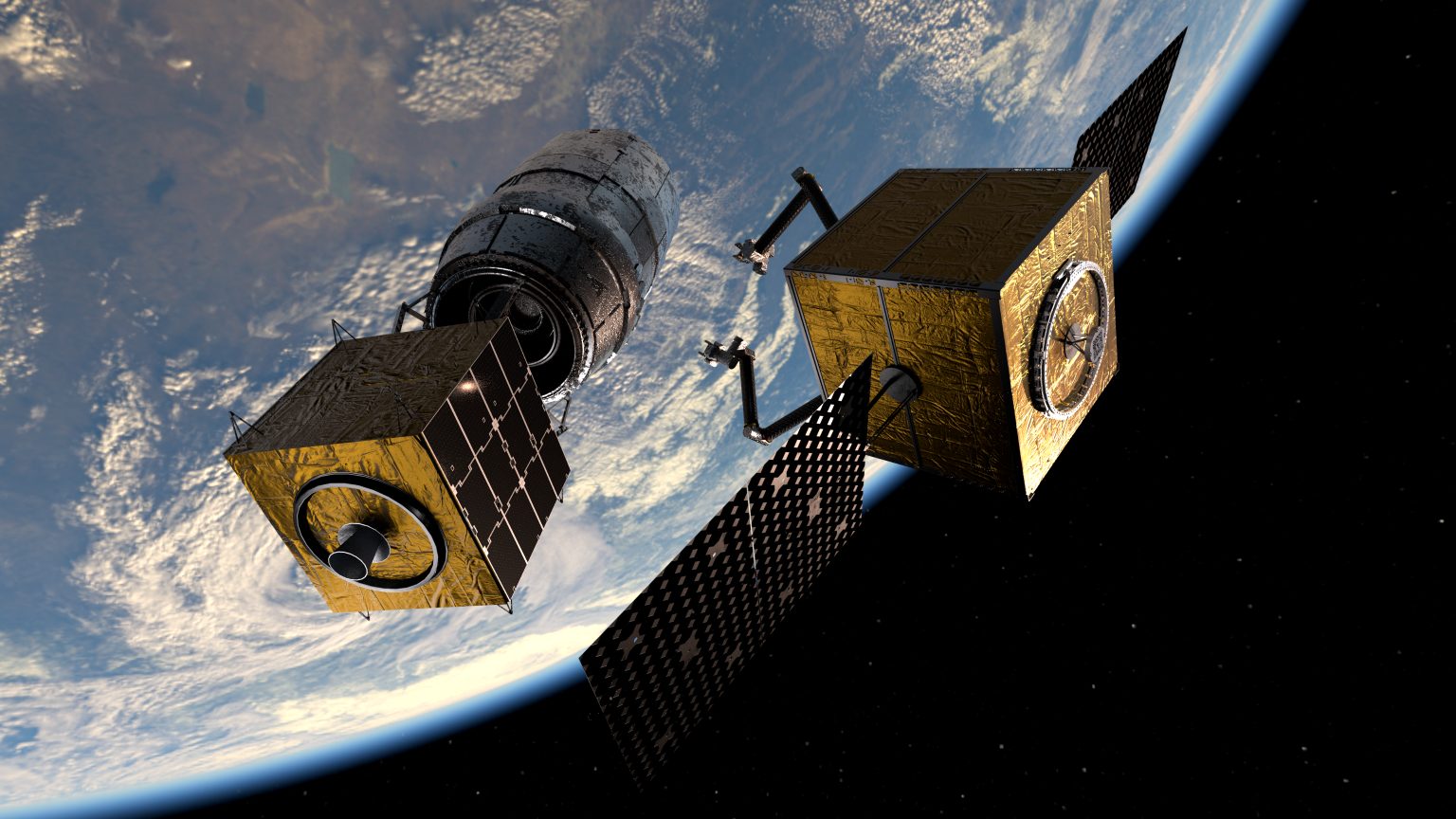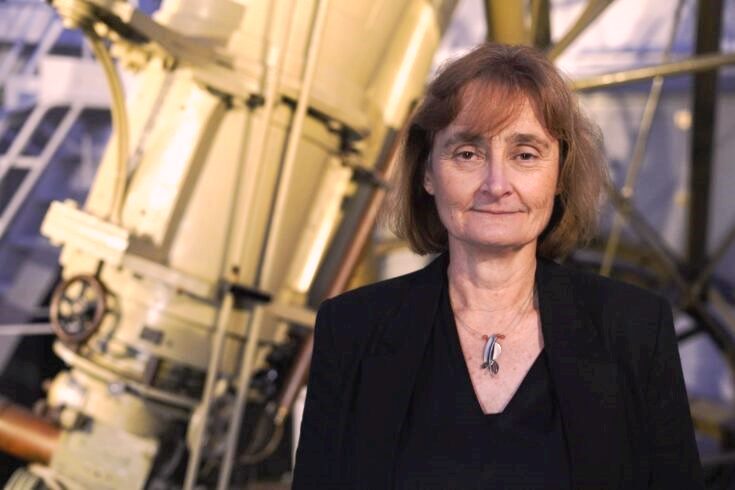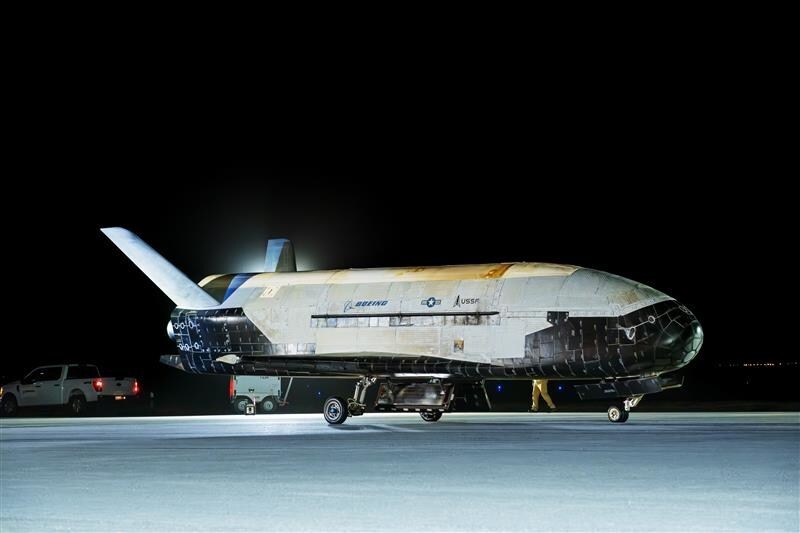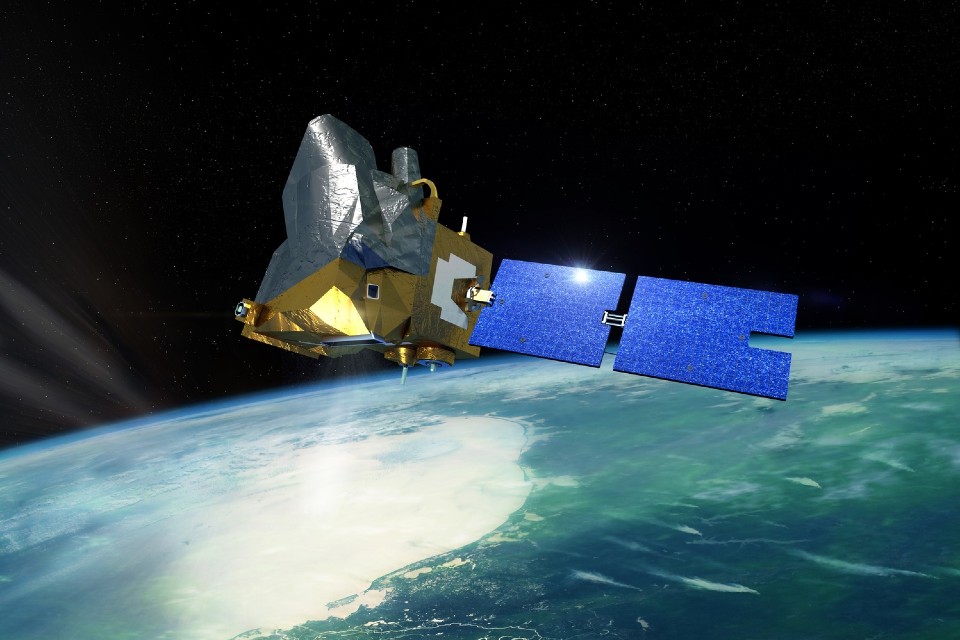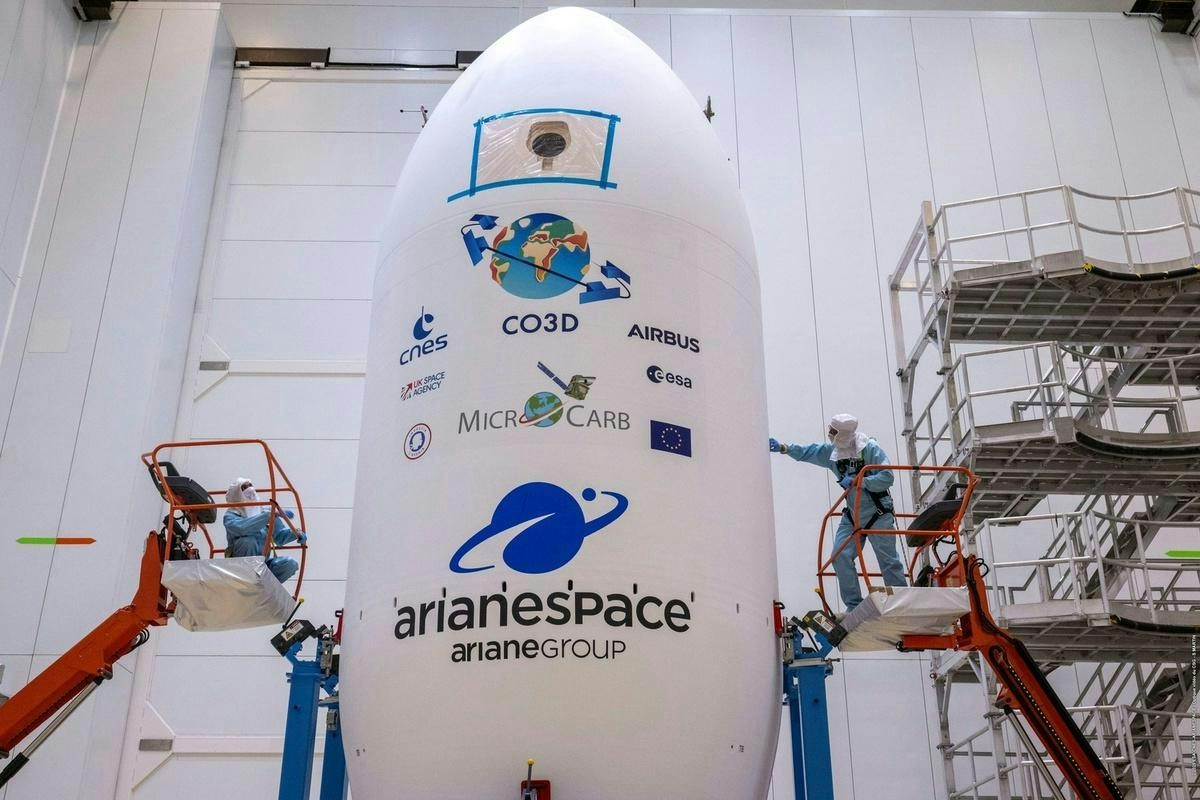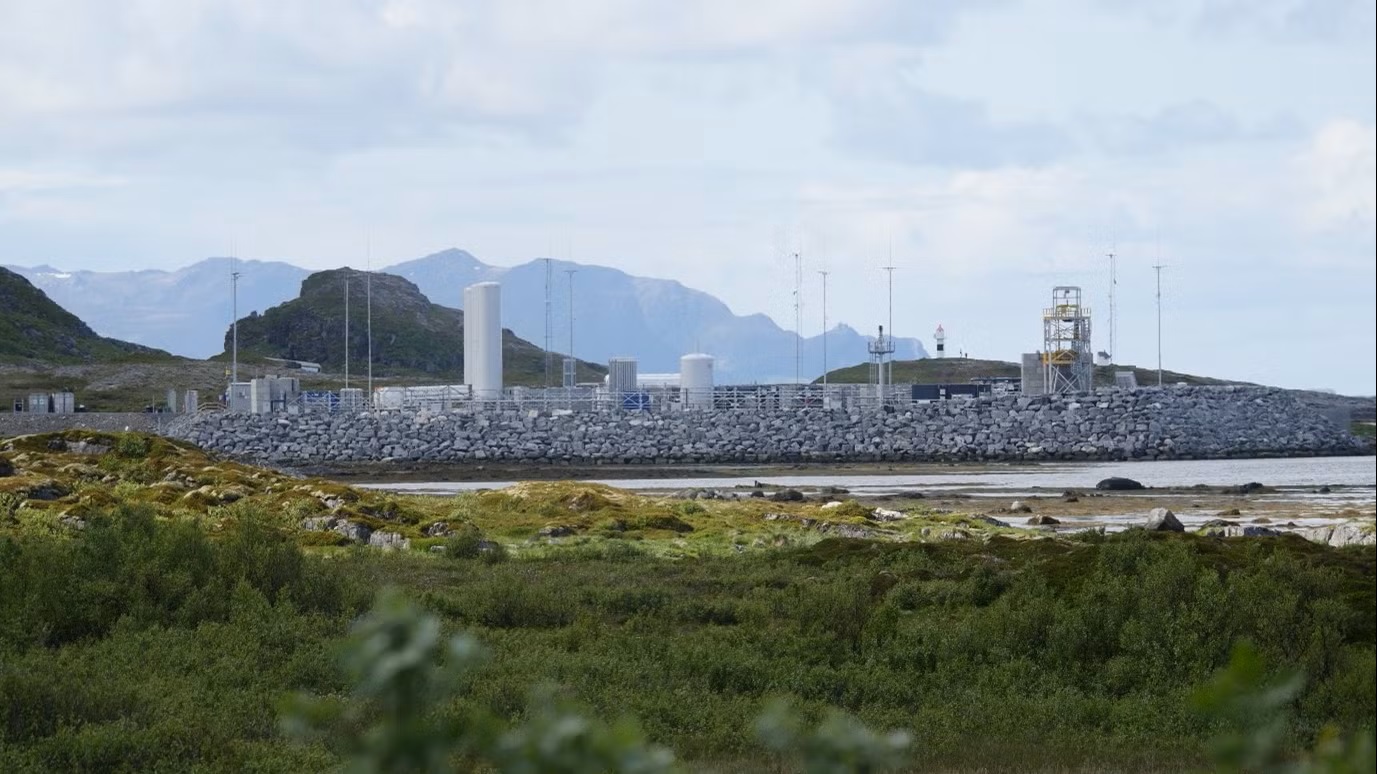Astrium UK wins €300m Solar Orbiter contract from ESA

Above: Solar Orbiter exploring the Sun's realm. Copyright: ESA/AOES
Prof. Alvaro Giménez Cañete, ESA Director of Science and Robotic Exploration and Miranda Mills, National Director – Earth Observation, Navigation and Science of Astrium signed the contract yesterday (26 April) on the occasion of a ceremony celebrating 50 years of the UK in space. The date of the signing was significant, timed to take place 50 years to the day that Britain became a space-faring nation with the launch of the Ariel-1 satellite on 26 April 1962.
The signature marks the start of the development and construction phase of Solar Orbiter, due for launch in 2017. Astrium UK will lead a team of European companies who will supply various parts of the spacecraft. The contract carries a value of about €300 million, one of the largest ever signed between the ESA Science Programme and a UK company.
In addition, 10 scientific instruments will be funded by the Member States of ESA and the United States, and developed by teams led by Principal Investigators from Belgium, France, Germany, Italy, Spain, Switzerland, the UK, and the US.
Speaking at the signing ceremony at the Science Museum in London, Prof. Giménez Cañete said: "Today ESA awarded a very important contract in the space science domain to Astrium's spacecraft design and build facility at Stevenage in the UK."
"This is testimony to the important role that the UK has played in space flight since the launch of Ariel-1 in 1962 and it is testimony to the important role that the UK continues to play in space science."
Solar Orbiter continues a long tradition of European Sun explorers, including Helios 1 and 2, Ulysses, and SOHO, all in partnership with NASA, as well as ESA's PROBA-2.
They have all prepared the ground for Solar Orbiter to advance our understanding of how the Solar System works, one of the major scientific questions of ESA's Cosmic Vision 2015–2025 programme.
Solar Orbiter will investigate the connections and the coupling between the Sun and the heliosphere, a huge bubble in space created by the solar wind that extends far beyond our Solar System. It is through this wind that solar activity can cause auroras and disrupt satellite-based communication.
To get a close-up view of the Sun and to observe the solar wind before it becomes disrupted, Solar Orbiter will fly to within 45 million kilometres of the Sun, closer than Mercury. It will image the poles for the first time, helping us understand how the Sun generates its magnetic field.
Prof. Cañete said: "Solar Orbiter is a fantastic mission. It will help us understand how the Sun, essential to almost all life on Earth, forms the heliosphere and the origin of space weather, which can have an enormous influence on our modern civilisation."
Colin Paynter, Head of Astrium UK.said: "I am delighted that Astrium has won Solar Orbiter, which reaffirms our leading position in science and exploration missions. Solar Orbiter is the second prime contract awarded by ESA to Astrium in less than six months. This contract builds on our unrivalled heritage in solar missions which includes the SOHO satellite which is still operational after 17 years providing valuable data for solar scientists across the world."
Solar Orbiter is an ESA-led mission with participation from NASA, who will contribute the launcher, one full instrument and one sensor.

Above: Solar Orbiter Payload. Copyright: Astrium UK
Solar Orbiter will study the Sun in detail and its effects on the solar system. The spacecraft will carry a suite of complementary instruments that will measure the particles, fields and waves of the plasma through which it travels, and at the same time make observations of the Sun’s surface and outer atmosphere, the photosphere and corona.
At its closest point Solar Orbiter will be closer to the Sun than the planet Mercury, at a distance of 0.28 Astronomical Units (42 million kilometers), in an orbit that takes it out of the ecliptic plane. From here, it can perform long-duration observations of the same region of the Sun’s surface, and have visibility of the Sun’s polar regions. It will be one of the closest approaches of the Sun by any spacecraft. To position itself in this challenging orbit, Solar Orbiter will make a complex series of gravitational-assist fly-bys past both Earth and Venus.
Design challenges include accommodating and resourcing a large suite of cutting-edge instruments and ensuring stringent magnetic and molecular cleanliness to enable the most sensitive scientific measurements to be made effectively. At its closest approach, where sunlight is thirteen times more intense than it is for satellites orbiting the Earth, Solar Orbiter must survive intense thermal radiation and protect its instrument suite, while at the same time allowing those instruments to observe the Sun. To achieve this, the design includes a heat shield and incorporates new high-temperature solar array technology.
The Sun is vital for life on Earth, but can also cause major problems for satellites and Earth based systems. The Sun releases bursts of high-energy particles (Coronal Mass Ejections), which can disrupt electrical power distribution systems, cause computers to crash, damage satellites and endanger astronauts. Solar Orbiter will provide scientific data to better understand the mechanisms on the Sun that cause these violent and disruptive outbursts.
Solar Orbiter builds on hugely successful missions such as SOHO and Ulysses that have provided remarkable insights into the workings of our Sun. Like those missions, it is a collaboration between ESA and NASA – a launcher will be provided by NASA and one instrument and one sensor will be contributed from the United States.
SOHO was developed by Astrium for ESA and launched in December 1995. From its orbit 1.5 million km from Earth, it has been observing the Sun for 17 years with 12 different instruments, revealing new information on the Sun’s interior, surface, the solar wind and its interaction with the interstellar medium. It has also revolutionised space weather forecasting and can provide up to three days notice of major solar events that impact our planet.
Astrium was also the prime contractor of ESA’s Ulysses mission. Ulysses operated for 18.5 years in an orbit taking it far above the Sun’s poles. Key discoveries include measurements of the solar wind from the Sun’s polar regions, the discovery that the magnetic flux from the Sun is uniform at all latitudes and the discovery of interstellar dust in the solar system.
Solar Orbiter builds on hugely successful missions such as SoHO and Ulysses. Like those missions, it is a collaboration between ESA and NASA, including major scientific payloads from the United States, and the provision of a launch by NASA.
Solar Orbiter will study the role of the engine at the very centre of the solar system – the sun. It will explore the origins of the solar wind, how acceleration of particles takes place, and how turbulence develops. It will trace the evolution of transient phenomena such as coronal mass ejections. Solar Orbiter will study the lifecycles of energetic particles – their sources, acceleration processes and distributions in space and time. It will increase knowledge of the solar dynamo that drives the connection between the sun and heliosphere, especially at high solar latitudes.
It is not possible to do these things from close to the Earth, where scattering and mixing have changed the properties of the solar wind and magnetic field. Solar Orbiter will circle nearer to the sun than any space probe to date, to perform a close-up study of the uncharted innermost regions of the solar system, at locations where it can view the sun’s high latitudes, and observe the links between the sun’s surface, its corona and heliosphere over dynamically important timescales.
Solar Orbiter will carry a suite of complementary instruments that will measure the particles, fields and waves of the plasma through which it travels, simultaneously making multi-wavelength remote-sensing observations of the sun’s photosphere, corona and heliosphere.
- In-situ observations will target the ions and electrons of the solar wind, and populations of shock-accelerated particles. The magnetic field will be measured, together with the properties of waves in the solar wind plasma.
- Remote sensing will map at high resolution the magnetic field distribution on the sun’s photosphere and its line-of-sight motions, coronal structures in visible, UV and EUV wavelengths and coronal UV spectra. Flares will be studied by imaging X-ray spectroscopy, while wide-field contextual imagery will trace heliospheric features out to 40°.
In this way, Solar Orbiter will measure phenomena of generation and acceleration from the photosphere out into the solar wind in which the spacecraft is embedded.



